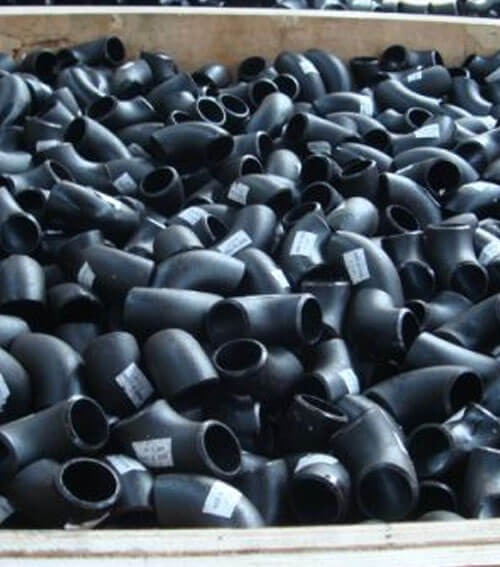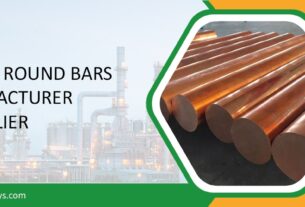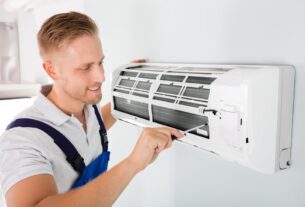When it comes to piping systems, pipe fittings play a crucial role in ensuring smooth flow, direction change, and overall efficiency. One such essential fitting is the 30 Degree Elbow. While many are familiar with 45° and 90° elbows, the 30° elbow is often overlooked despite its significant importance in specialized piping applications.
In this blog, we’ll cover everything you need to know about 30 Degree Elbow from their design and manufacturing standards to their types, applications, materials, and benefits.
What is a 30 Degree Elbow?
A 30 Degree Elbow is a type of pipe fitting that allows a 30° change in the direction of flow in a piping system. Unlike 90° and 45° elbows, which are more commonly used, the 30° elbow is often applied in situations where a gentler change in flow direction is required.
It belongs to the buttweld fittings category and is usually available in long radius (LR) and short radius (SR) types. By creating a smooth transition in the piping layout, a 30° elbow helps reduce turbulence and pressure loss.
Importance of 30 Degree Elbow in Piping Systems
The 30 Degree Elbow might not be as widely used as 45° or 90° fittings, but it offers several unique advantages:
- Smooth flow transition: Ideal for systems that cannot afford sharp turns.
- Reduced pressure drop: Prevents sudden changes in velocity and minimizes energy loss.
- Space optimization: Perfect for piping layouts that require precise directional adjustments.
- Versatility: Can be used across industries like oil & gas, power plants, chemical processing, shipbuilding, and more.
Types of 30 Degree Elbow
Like other pipe elbows, the 30 Degree Elbow comes in different variations based on radius, ends, and material.
1. Based on Radius
- Short Radius (SR) 30 Degree Elbow
- Center-to-face dimension = 1 x pipe diameter.
- Used in tight spaces where compact design is necessary.
- Long Radius (LR) 30 Degree Elbow
- Center-to-face dimension = 1.5 x pipe diameter.
- Provides smoother flow, reduces friction and pressure drop.
2. Based on End Connections
- Buttweld 30 Degree Elbow – Most commonly used for permanent connections.
- Socket Weld 30 Degree Elbow – Preferred for smaller sizes.
- Threaded 30 Degree Elbow – Easy to install and dismantle, suitable for low-pressure systems.
3. Based on Material
Depending on the application, 30 Degree Elbows are manufactured in:
- Stainless Steel (excellent corrosion resistance)
- Carbon Steel (high strength, cost-effective)
- Alloy Steel (suitable for high-temperature & pressure conditions)
- Duplex & Super Duplex Steel (enhanced strength & resistance)
- Nickel Alloys, Copper Alloys, Titanium (special applications)
Manufacturing Standards for 30 Degree Elbow
To ensure safety and compatibility in global piping projects, 30 Degree Elbow fittings are manufactured according to international standards:
- ASME B16.9 – Factory-made buttweld fittings.
- ASME B16.11 – Forged socket-weld and threaded fittings.
- MSS-SP-75 – High-pressure butt-welded fittings.
- DIN, JIS, EN, GOST – European and international standards.
Dimensions of 30 Degree Elbow
The dimensions of a 30 Degree Elbow depend on the pipe size, wall thickness (schedule), and radius. Common size ranges include:
- Nominal Pipe Size (NPS): ½” to 48” (and above for custom orders).
- Schedules Available: SCH 10, SCH 20, SCH 40, SCH 80, SCH 160, SCH XXS.
The center-to-end dimensions for 30° elbows are usually derived from standard piping tables as per ASME or DIN standards.
Applications of 30 Degree Elbow
The 30 Degree Elbow is used in industries and applications where piping requires a smoother directional change:
- Oil & Gas Industry – For refineries, pipelines, and offshore platforms.
- Petrochemical Plants – To handle aggressive chemicals and fluids.
- Power Generation – In boilers, heat exchangers, and turbines.
- Shipbuilding & Marine Applications – Corrosion-resistant elbows for seawater systems.
- Water Treatment Plants – Smooth flow for pumping stations and treatment units.
- Pharmaceutical & Food Processing – Hygienic flow with stainless steel elbows.
Advantages of Using 30 Degree Elbow
Using a 30 Degree Elbow offers several benefits in critical piping systems:
- Smooth Flow Transition – Reduces stress on pumps and valves.
- Minimizes Pressure Drop – Keeps efficiency high.
- Durability – High-quality materials ensure long service life.
- Wide Material Availability – Suitable for different fluids and gases.
- Customizable – Available in different thicknesses, sizes, and coatings.
Difference Between 30°, 45°, and 90° Elbows
| Feature | 30° Elbow | 45° Elbow | 90° Elbow |
|---|---|---|---|
| Change in Direction | 30 degrees | 45 degrees | 90 degrees |
| Flow Resistance | Very Low | Low | High |
| Space Requirement | Compact | Moderate | Larger |
| Applications | Precise layouts, smooth flow | General direction change | Sharp turns in piping |
How to Select the Right 30 Degree Elbow
When selecting a 30 Degree Elbow, consider:
- Material Compatibility – Ensure corrosion and temperature resistance.
- Size & Dimensions – Match pipe diameter and thickness.
- Pressure Rating – Verify schedule and operating pressure.
- Standard Compliance – Must adhere to ASME, DIN, or other project standards.
- End Connections – Choose between buttweld, threaded, or socket weld.
Final Thoughts
The 30 Degree Elbow may seem like a small component in the piping world, but its role in ensuring smooth, efficient, and safe flow cannot be ignored. From oil & gas pipelines to pharmaceutical plants, this fitting has widespread applications and offers significant advantages.
By understanding its types, dimensions, materials, and uses, engineers and project managers can choose the right elbow that enhances performance while minimizing risks.



